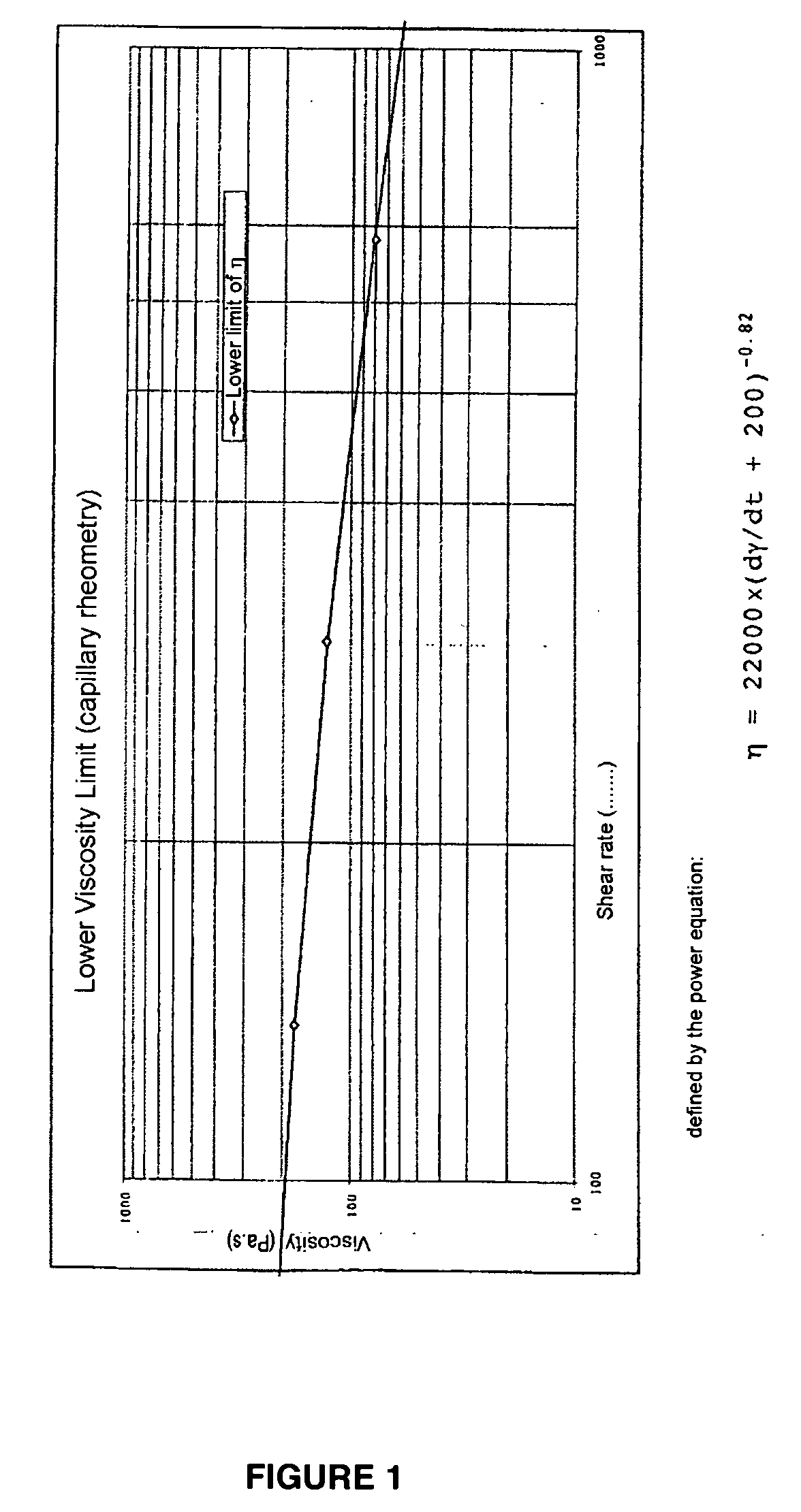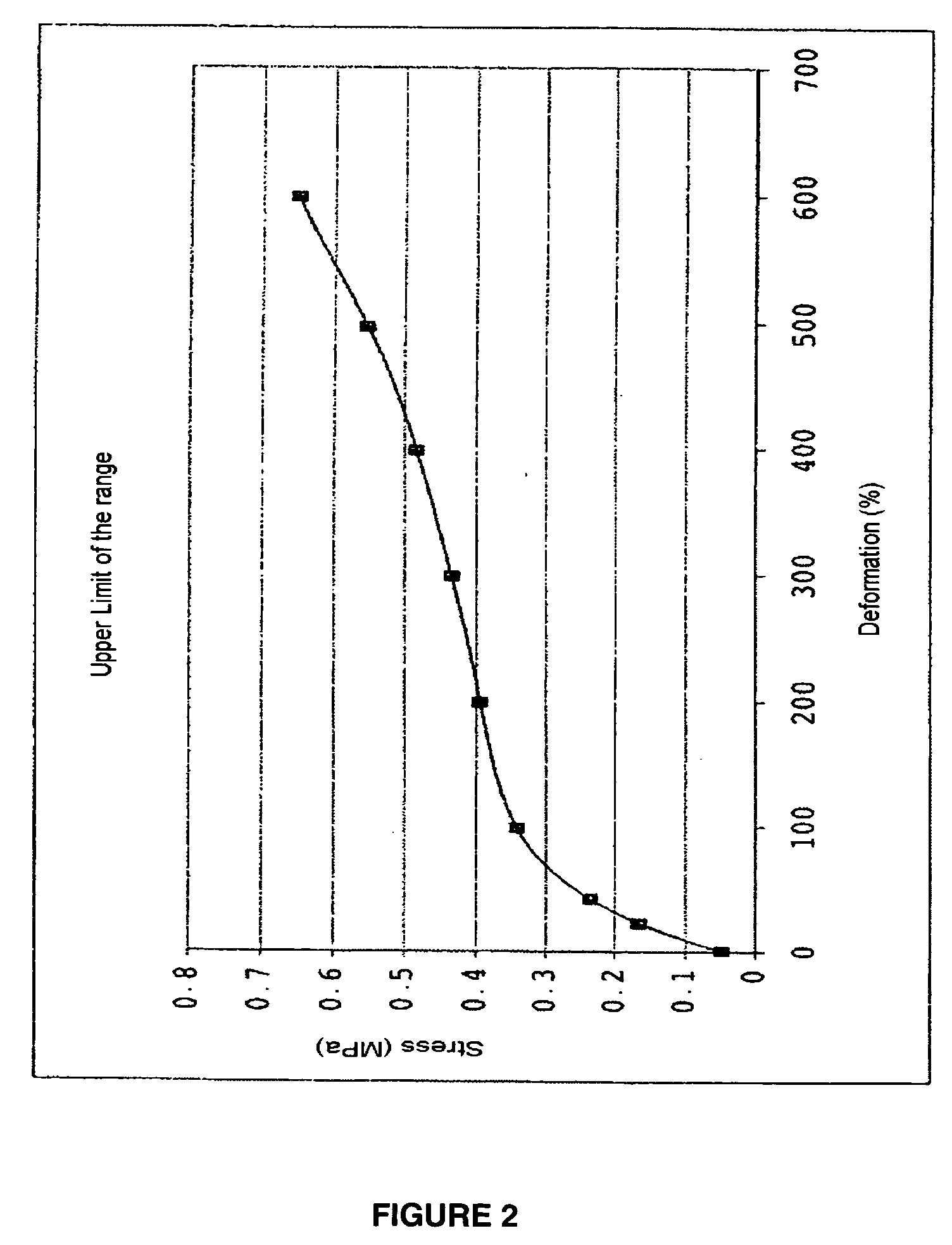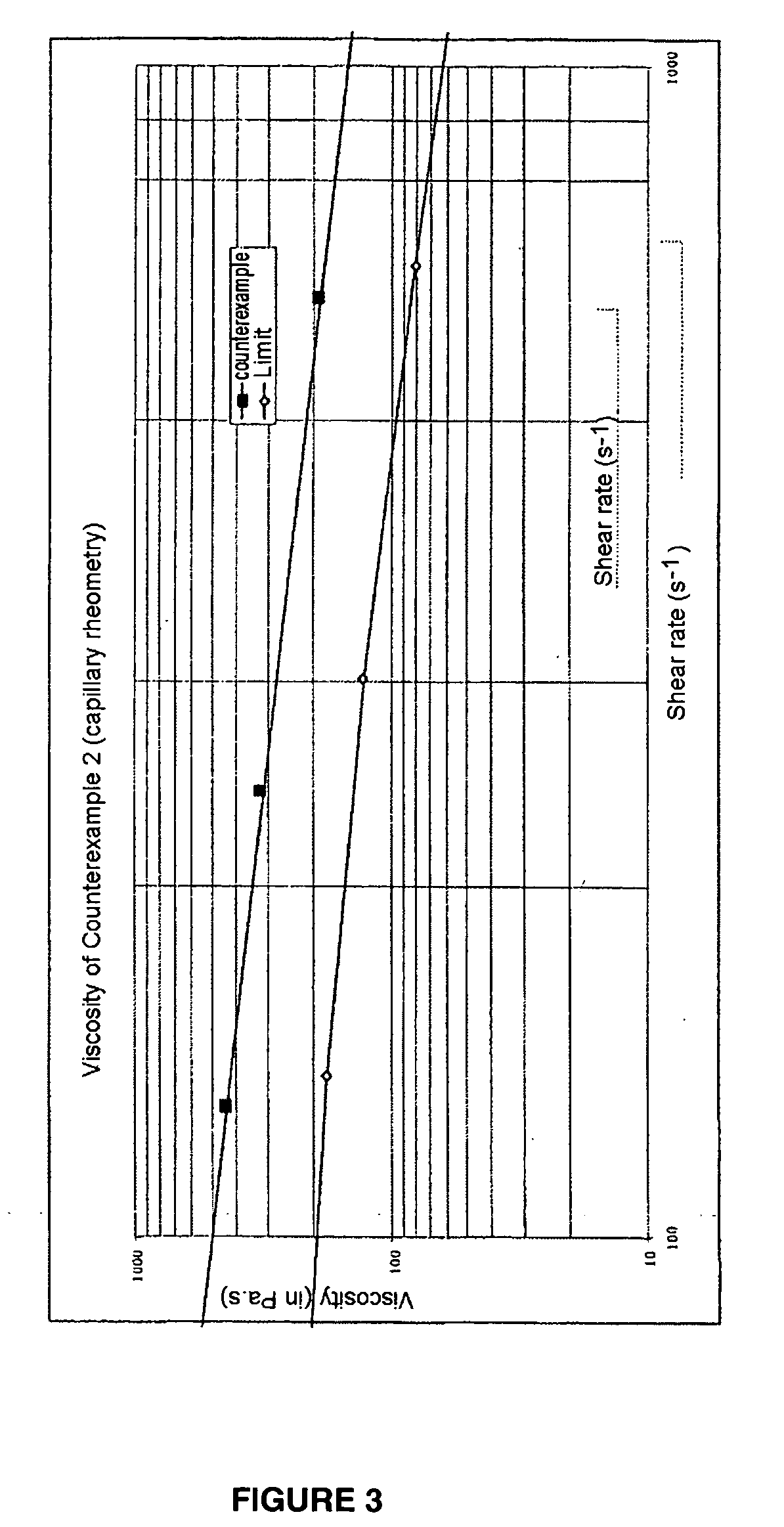Hot-extrudable pressure-sensitive hot-melt adhesives and their use in multilayer films
a technology of pressure-sensitive adhesives and hot-melt adhesives, which is applied in the direction of film/foil adhesives, synthetic resin layered products, transportation and packaging, etc., can solve the problems of low reopening force, high packaging cost, and reduced pressure-sensitive adhesive properties required for reclosure, etc., and achieves simple manual pressure
- Summary
- Abstract
- Description
- Claims
- Application Information
AI Technical Summary
Benefits of technology
Problems solved by technology
Method used
Image
Examples
example 1
According to the Invention
[0105] The composition of the hot-melt pressure-sensitive adhesive 1 according to the invention is given in table A below:
1TABLE A COMPO- SITION 1 Nature of polymer fraction SIS Polymer in the adhesive (wt %) 65 Styrene in the polymer phase (wt %) 18.0 Diblocks in the polymer phase (wt %) 45.0 Calculated MFI of the polymer phase (g / 10 min) 18.0 (calculated centroid of the MFIs of the polymers used, weighted by their mass fraction within the polymer fraction) Polyterpene resin in the resin phase (wt %) 50 Capillary rheometry at 150.degree. C. and 1 000 s.sup.-1 (Pa .multidot. s) 107.0 Maximum force at 640% elongation (MPa) with a pull rate 0.5 of 1 m / s
[0106] This composition had a viscosity profile between 100 and 1,000 s.sup.-1 lying within the claimed range, namely above the previously defined lower limit.
[0107] and a tensile strength at 1 m.s.sup.-1 lying within the claimed range, namely below the previously defined upper limit:
[0108] Since all the condit...
example 2
Outside the Invention
[0109] The hot-melt pressure-sensitive composition 2 not according to the invention is given in table B below:
2TABLE B COMPO- SITION 2 Nature of polymer fraction SIS Polymer in the adhesive (wt %) 60 Styrene in the polymer phase (wt %) 22.0 Diblocks in the polymer phase (wt %) 15.0 Calculated MFI of the polymer phase (g / 10 min) 2.0 (calculated centroid of the MFIs of the polymers used, weighted by their mass fraction within the polymer fraction) Polyterpene resin in the resin phase (wt %) 60 Capillary rheometry at 150.degree. C. and 1 000 s.sup.-1 (Pa .multidot. s) 170.0 Maximum force at 640% elongation (MPa) with a pull rate 1.3 of 1 m / s
[0110]
[0111] This composition has a viscosity profile between 100 and 1,000 s.sup.-1 lying above the previously defined lower limit, but a tensile strength at 1 m.s.sup.-1 above the previously defined limit because of its low diblock content.
[0112] Since only one of the two conditions according to the invention is met, example 2...
example 3
[0114] Example 3 illustrates the impact and the advantages of composition 1 according to the invention. It is compared with composition 2 that is not according to the invention and is characteristic of the adhesives of the prior art.
[0115] The following results were obtained (table C):
3TABLE C COEXTRUDED, COEXTRUDED, COMPLEXED AND COMPLEXED WELDED STRUCTURE AND WELDED BASED ON STRUCTURE BASED COMPOSITION 1 ON COMPOSITION 2 Initiation at 1st 14.7 >30 opening in peel at 200 mm / min (N / cm) Propagation of the 1st 9.8 27 opening in peel at 200 mm / min (N / cm) 2nd opening in peel at 6 9 200 mm / min after 1 manual repositioning operation (N / cm) 5th opening in peel at 4 7 200 mm / min after 4 manual repositioning operations (N / cm) Failure mode at the Cohesive Cohesive first opening
[0116] For the structure produced using composition 1 according to the invention, the forces needed to initiate and propagate the first opening are characteristic of an easy-open package. These forces, that are very hig...
PUM
| Property | Measurement | Unit |
|---|---|---|
| temperature | aaaaa | aaaaa |
| temperature | aaaaa | aaaaa |
| MFI | aaaaa | aaaaa |
Abstract
Description
Claims
Application Information
 Login to View More
Login to View More - R&D
- Intellectual Property
- Life Sciences
- Materials
- Tech Scout
- Unparalleled Data Quality
- Higher Quality Content
- 60% Fewer Hallucinations
Browse by: Latest US Patents, China's latest patents, Technical Efficacy Thesaurus, Application Domain, Technology Topic, Popular Technical Reports.
© 2025 PatSnap. All rights reserved.Legal|Privacy policy|Modern Slavery Act Transparency Statement|Sitemap|About US| Contact US: help@patsnap.com



